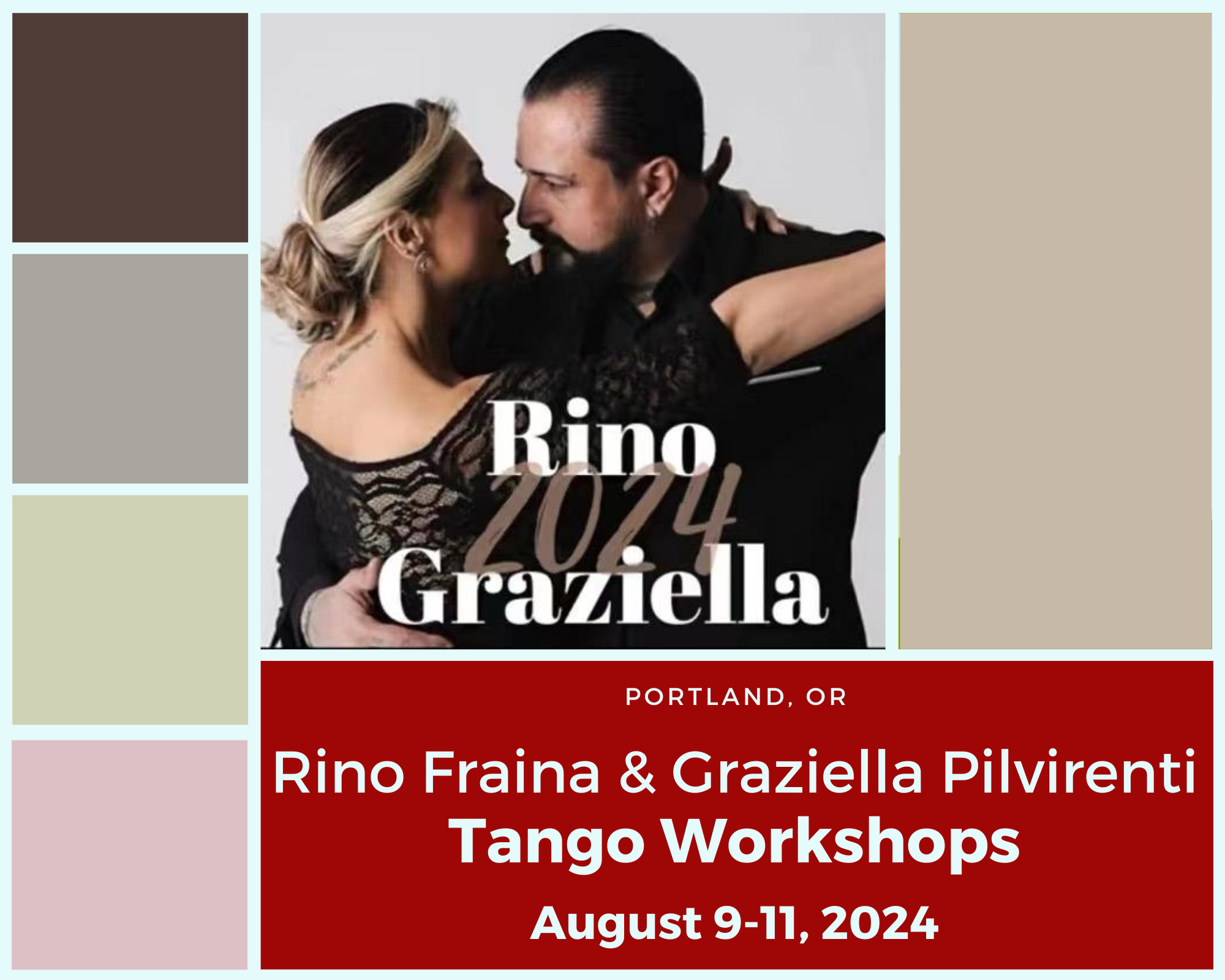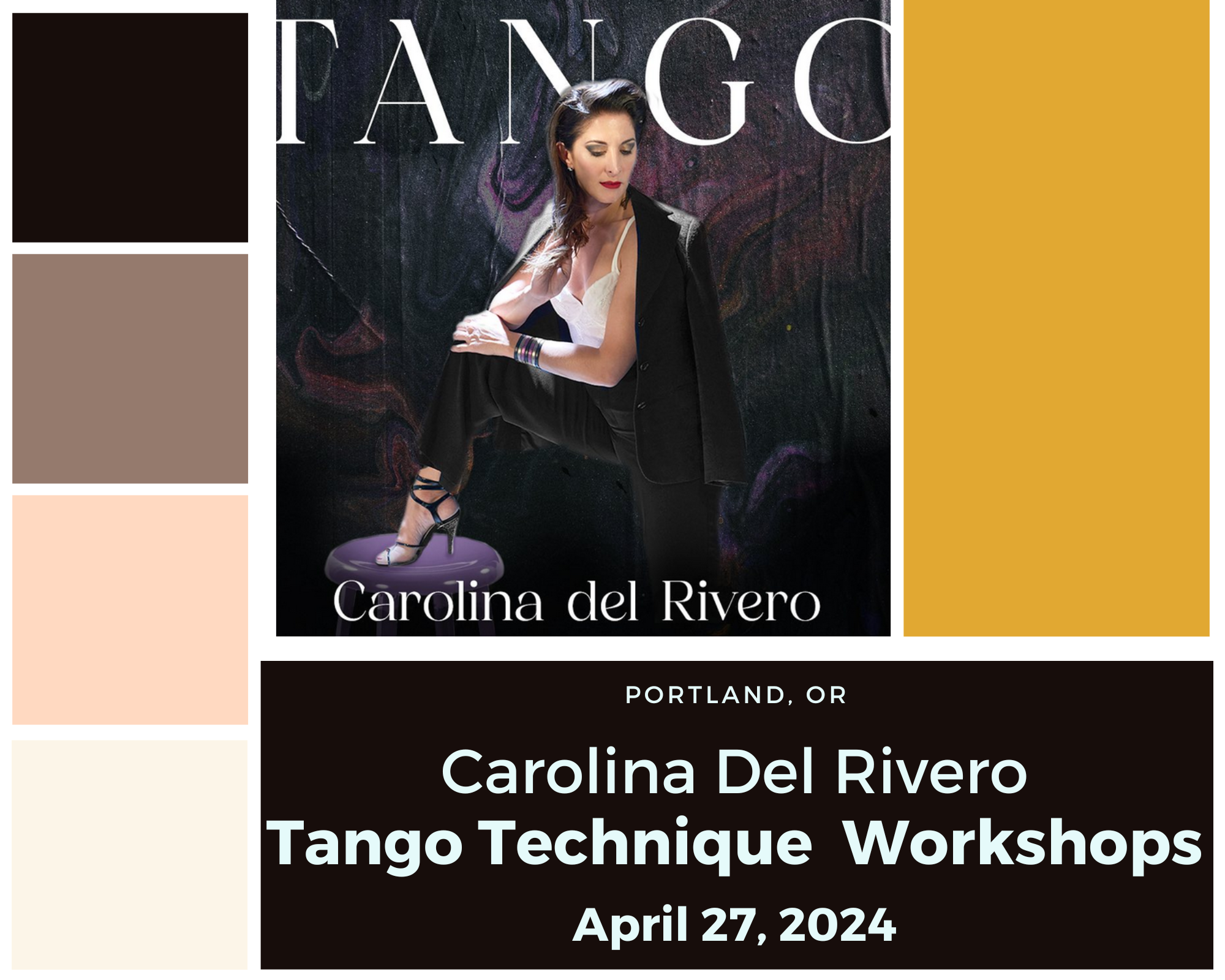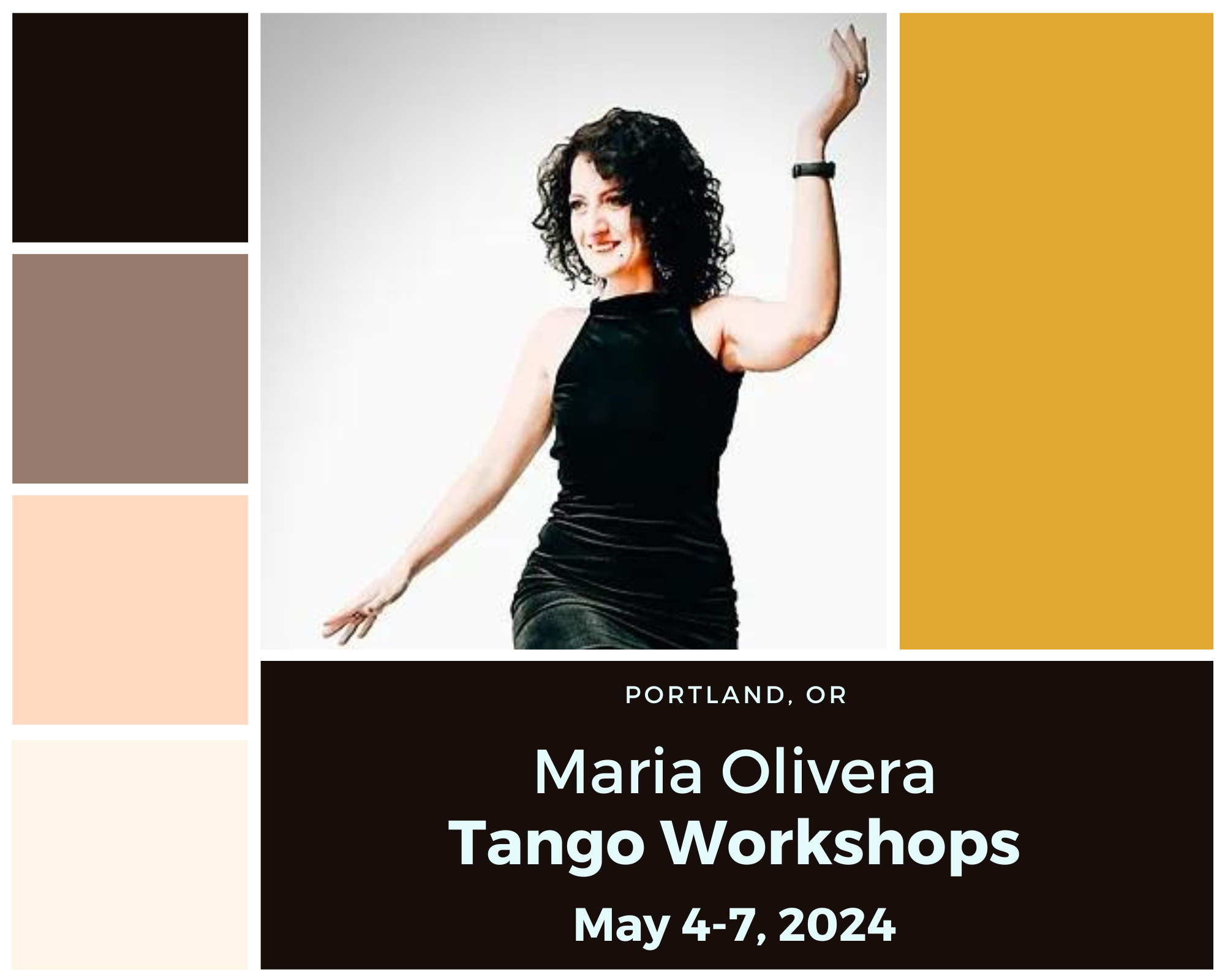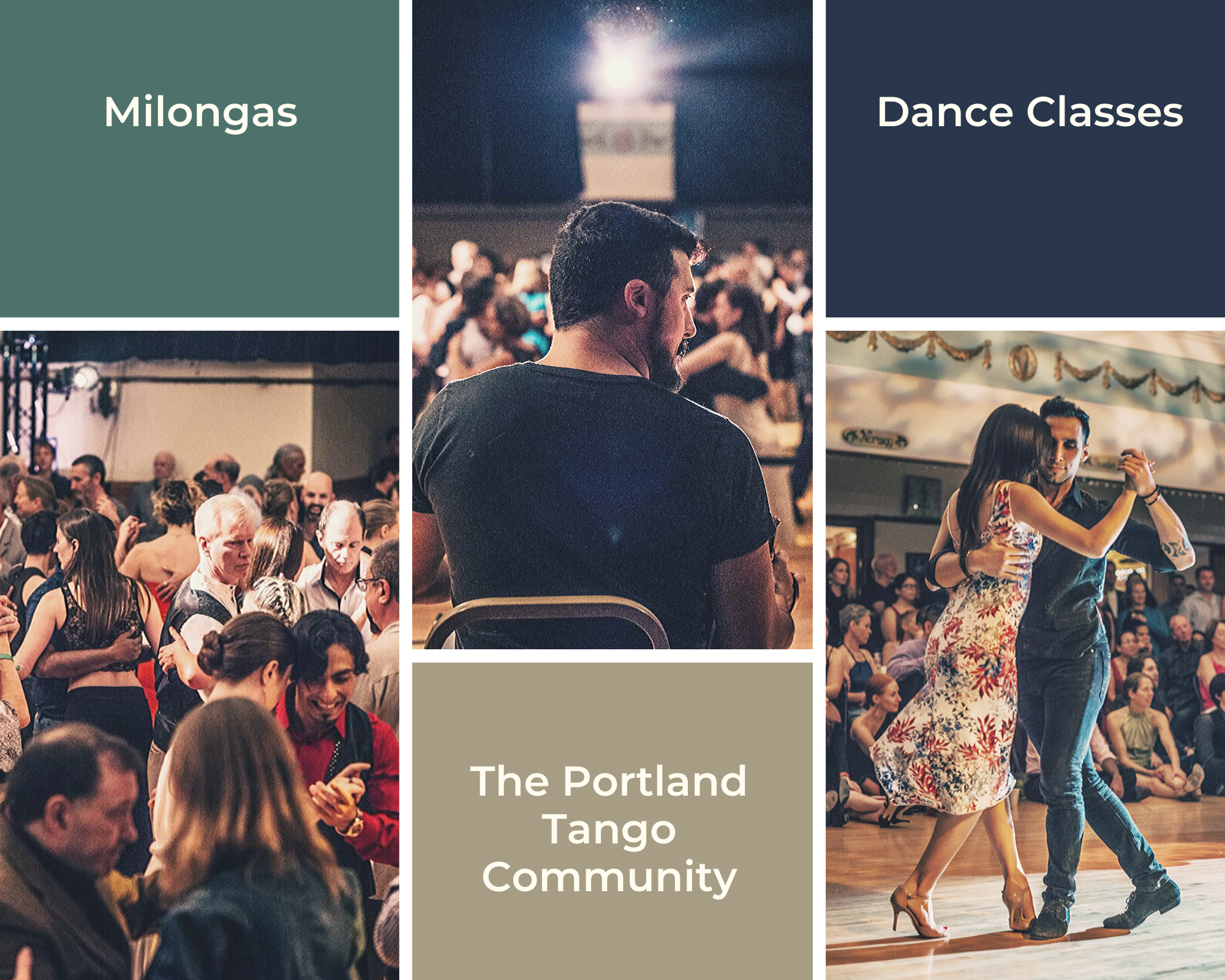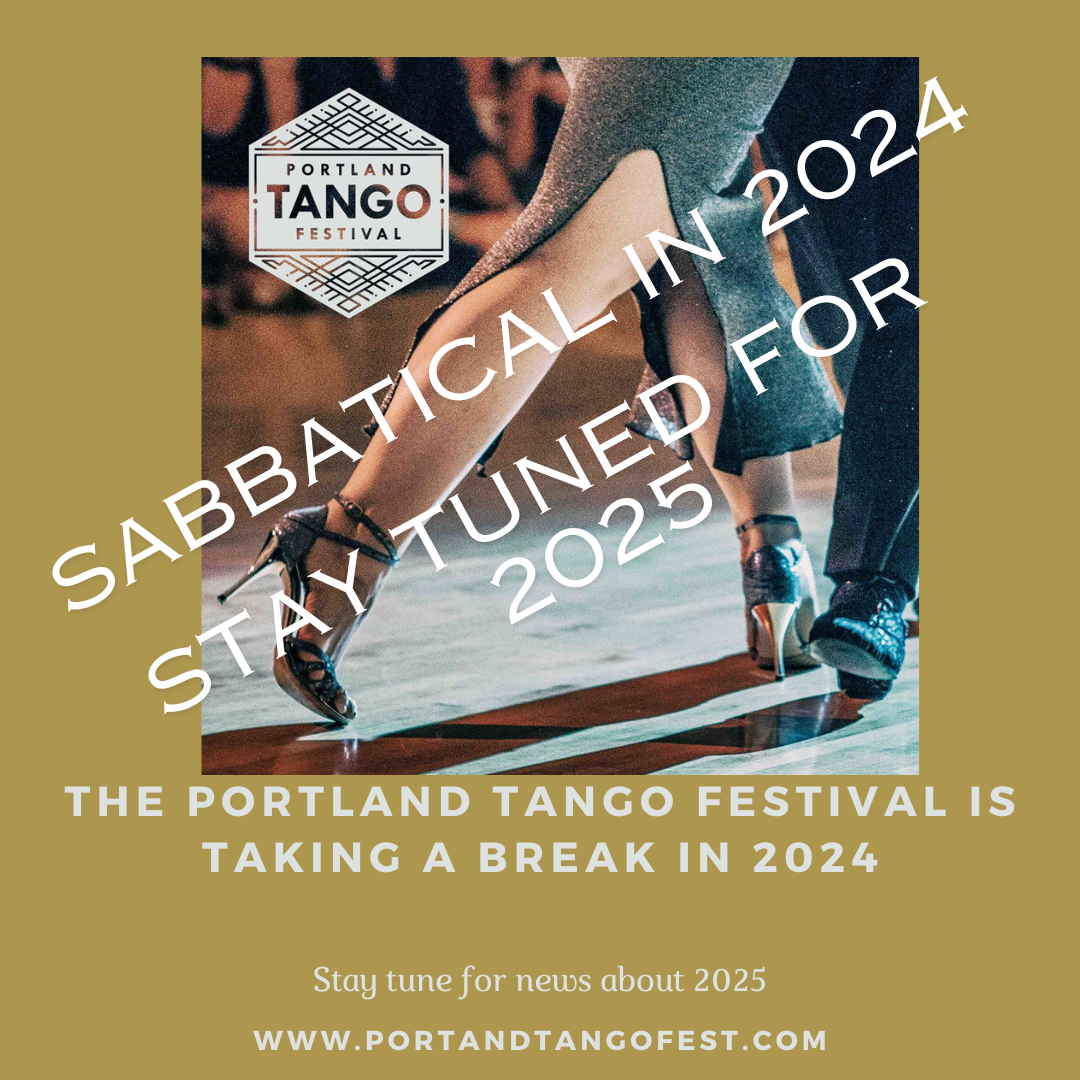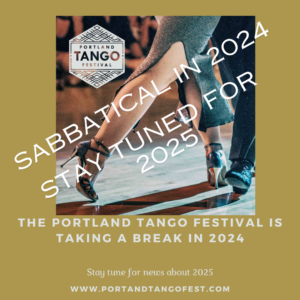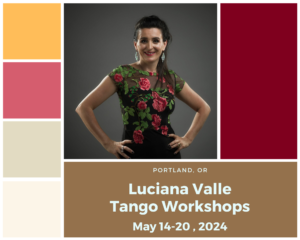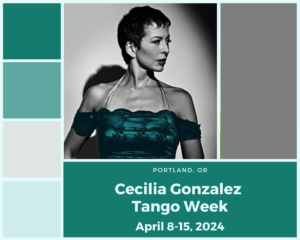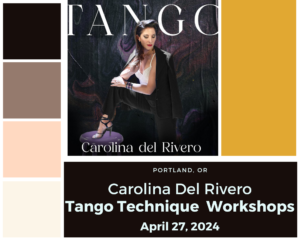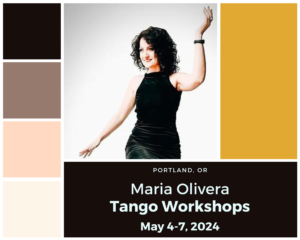Welcome
to the
Portland Tango Site
Event Calendars
See what's happening today.
Find information about the Portland Argentine Tango community with its events, milongas and classes.
New mailing list
Sign up to receive information in your mailbox
visiting from out of town?
Find out where to dance and practice tango.
New to tango?
You are in the right place, learn where to start.
News and Community
NOTE: few practicas and milongas might be suspended.
Check MILONGAS & PRACTICAS.
Local Community Events
-
Norse Hall Milonga Returns!
One Night Only!The Norse Hall Milonga RETURNS! One night Only! A special Benefit Milonga with all profits donated to Blanchet House -
Portland Valentango
Valentango 2025 - SAVE THE DATE - February 12- 18, 2025 - More info at https://valentango.us/ -
Portland TangoFest 2024
The Portland TangoFest is under construction... We are taking a break in 2024 but stay tuned for 2025 Festival plans!
Visiting Teachers
-
Luciana Valle Portland Tango weekend
Tango week with Luciana Valle from Buenos Aires. Workshops May 18-19, 2024 Location TBD. -
Cecilia Gonzalez
Portland Tango weekTango week with Cecilia Gonzalez from Buenos Aires. Workshops April 8-15, 2024 at Dance with Joy Studios. -
Carolina Del Rivero
Technique WorkshopsTango Technique Workshop with Carolina Del Rivero. April 27, 2024, 2:00-5:00 pm at Tango Berretin. -
Maria Olivera tango Workshops
SAVE THE DATE: May 4-7, 2024 - Tango Workshops with Maria Olivera from Buenos Aires, Argentina @ Shabu Studios -
Rino Fraina and Graziella Pulvirenti Portland Tango weekend
Tango week withRino & Graziella from Catania Italy. Workshops August 9-11, 2024. Location TBD.
Announcement lists
Sign up to our mailing lists.
Follow Us on Facebook
You can find more information about what is happening in our community liking the following Facebook groups:
Tango around Oregon
There is tango all over Oregon:
Tango Fund
The Portland Tango Association offers a scholarship program designed to provide some financial help to members of the Portland tango community that are interested in perfecting their tango skills . The scholarship is meant to help them cover part of their expenses in taking classes from local and visiting teachers or participating to local festivals.
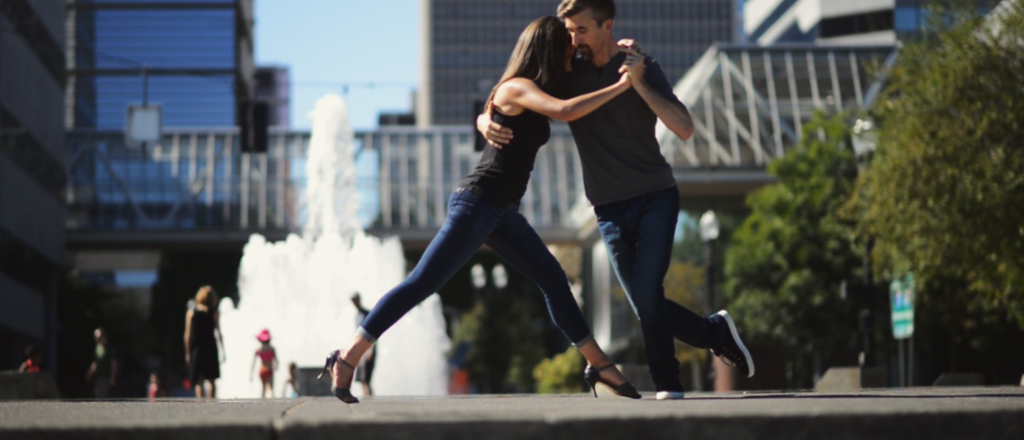
You May Be Wondering
There are many ways to answer this question. Here are a few approaches:
- Argentine Tango is a partnered social dance, with the couple dancing embraced. Unlike “ballroom” style dances, which tend to be more structured, social tango is improvised, with every step being a spontaneous discovery in the moment, as the partners focus on their connections to each other and to the music.
- Danial Trenner once explained at a workshop here in Portland that while most dances are defined by specific step patterns and/or rhythm structures, Tango, though it is generally confined to “regular” rhythms, has an infinite variety of step patterns. The thing that defines the dance as “tango” is not the steps, but the “manner” or the “way” that the steps are danced. The “connection” mentioned above is not so much a result of anything in the dance as it is a requirement. In order to do a dance where every step is spontaneously improvised, both partners must be paying full attention to each other. This creates the connection that is by its nature very sensual, unlike anything else in the dance world.
- Read what Portland’s world-famous Tango legend Alex Krebs has to say about it on his website.
- Vladimir Estrin of tangoAficionado.com has written a very nice piece on his homepage titled, “Tango is more than just a dance!” Do check it out.
- Christine Denniston in the UK has an even more in-depth history of Argentine Tango on her incredible website documenting 150 years of tango history.
- Read what Portland tanguero Jay Rabe has to say about it on his website.
- The easiest way, with the least commitment, is to go to a milonga or practica (see definition below). Most milongas and practicas currently running in Portland (click on “milongas” on the main menu bar to see list) have a free beginning lesson as the first hour of the event. There are always complete beginners at these lessons, so even if you’ve never danced a step of tango, you need not feel intimidated. There will almost surely be other, equally inexperienced dancers there, and the lessons are always designed to accommodate absolute beginners.
- … or … There are over two dozen experienced Argentine Tango dancers in Portland who also teach. See “Teachers” on the main menu bar for a list and description. All of them offer private lessons for you as an individual (whether man or woman), or for you and a partner. Private lessons are more expensive than the free lesson at a milonga, of course, but you get undivided attention from the teacher.
- … or … Most Portland teachers also offer groups classes throughout the year. If you click the menu Event Calendars on the main menu bar, you can see what is scheduled. You should also sign up for Portango-a, so you can receive email announcements when new classes are formed.
- A milonga is an Argentine Tango social dance. People come as individuals or with a partner. Music is usually played in tandas, or sets, with 3 or 4 songs in a tanda. In betwen tandas there will be a cortina, a short music interlude (30 sec or so long) of non-tango music. This is the customary time to change partners or take a break if you want to.
- A practica is a practice dance. Floorcraft protocols are generally relaxed as compared to a milonga. Specifically, it is OK to talk during the dance, and impeding traffic within reason while you work on a step is accepted.
Here in Portland in 2018-19, about 75% of dancers are single, with 25% being married or otherwise attached. Ages vary from 20-something (or less) to over 70. Median age is probably 30-35.
Attire varies considerably. Some people dress up, while others wear jeans and T-shirts. This is Portland, after all. We tend to be pretty cosmopolitan. In general, practicas are less formal than milongas.
Most milongas typically play traditional Argentine tango music, but there are milongas that play alternative type of music more geared to the type of music people that start are used to listen.
Suffice to say that wherever you go, you cannot be over-dressed, nor can you be under-dressed. It’s really all about the dancing.
Since most milongas have a beginning lesson as the first hour of the dance, there will be a majority of beginning dancers during the early part of the evening. More experienced dancers tend to arrive from 9:30 to 10:30.
Floorcraft, or dance floor etiquette, is an informal collection of protocols and guidelines that have evolved to maximize everyone’s enjoyment.
Good floorcraft allows the couple to navigate smoothly around the dance floor, staying in “Line of Dance” (moving counterclockwise around the dance floor) while avoiding collisions with walls, furniture, or other dancers. With some exceptions, floorcraft is the responsibility of the leader. This allows the follower to “zone out” and just enjoy the embrace and the music, trusting her follower to take care of her.
The main goal of floorcraft and dancefloor etiquette is to avoid injury – to the follower, to other dancers, and to walls and furniture and potted plants. This requires that the leader be paying full attention to his surroundings and to other dancers and their styles of dancing – whether they are controlled and disciplined, or whether they are wild and crazy.
The second goal is to keep traffic moving around line-of-dance. This means not stopping and blocking other dancers behind you if there is an empty space in front of you.
As you progress CCW around the floor in line-of-dance, the most strategic place to dance is near the wall, close enough that no one has space to get into your blind-spot by passing you on the right.
Stay in single-file if you can. At a crowded venue, it will naturally happen that couples will migrate into several “rings” or “lanes” of single-file dancers. Try not to switch lanes to pass slower couples, unless they appear to be clueless and a traffic jam of dancers is building up behind you.
Is is customary to not talk at all while dancing at a milonga. If you want to talk or teach or discuss a step, it is polite to wait until you are off the dance floor so you don’t disturb other dancers. At practicas, as mentioned above, this protocol is relaxed, and it’s OK to talk, to work on your steps, or to discuss technique while on the dance floor.
Entering the dance floor while other dancers are dancing is like merging onto the freeway: wait for an opening, make eye contact if you can, and move in gracefully without disturbing the other dancers, rather than forcing your way into the line of dance.
- Click Milongas & Practicas on the main menu bar for a listing of regularly scheduled events in Portland.
- Click Event Calendars on the main menu bar to see a listing of everything, including classes and other events happening in Portland.
- On this page find a list of one-time special events in Portland. Many of these are workshops or performances, but a lot of them are opportunities to dance too.
Most often, here in Portland, you just walk up and ask someone. Either a man or a woman can ask another person to dance, and it’s accepted at all venues for women to dance with women or men to dance with men.
However, there is a charming convention that originated in Argentina called the cabeceo that involves making eye contact. If there’s someone you want to dance with, you stare at them until they look your way. When you make eye contact, you raise your eyebrows and/or make a subtle head nod (cabeceo = nod) toward the dance floor. The responder answers “yes” by smiling and nodding back, or “no” by turning and looking away. (It’s polite to wait until your potential partner has come off the dance floor before you ask them for the next dance.)
The key thing to make this work is that you must make eye contact. In American culture that can be considered aggressive, but, well, you just have to get over that if you want the cabeceo to work.
If you avoid eye contact (see cabeceo in ‘how to ask’, above), the potential asker may get the message that you don’t want to dance. If they come up and ask you anyway, a simple, “No, thank you,” with or without a big smile or an explanation, should be sufficient.
You may offer a courteous excuse to soften the refusal, for example: “I am resting – would rather not dance to this music – want to finish this conversation,” or whatever. If you are hoping to dance with this person some other time, be sure to say so.
If you have declined an invitation to dance with the excuse that you are “resting,” it would be thoughtless and/or rude to then accept another offer, even if from a more desirable dance partner, before the song or tanda has ended, unless of course you INTEND to give the first person the message that you don’t ever want to dance with them in the future.
You have the right to refuse to dance with anyone, at any time. You have the right to end a dance at any time, even ifn the middle of a song (see next section).
I you say “thank you” to your dance partner it is a coded way of saying, “I want to stop dancing now.” If you want to express your appreciation for the dance, but you want to keep dancing with this partner, use words or an expression other than “thank you.”.
The cortina (the non-dance-able interlude between sets/tandas) is the customary time to change partners. However, it’s entirely OK to dance more than one tanda with the same partner, and it’s equally OK to stop dancing before the tanda or even before the song is over, if you are sufficiently uncomfortable for any reason. Maybe they’re throwing you around, maybe they smell bad, or maybe you’re just getting a blister on your foot. Whatever the reason, just stop, explain whatever you want, thank them, and leave the dance floor.
That said, there is truth to the saying that “Everyone sees everything on the dance floor,” and ending a dance early, especially in the middle of a song, is potentially embarrassing. So if you don’t INTEND to embarrass them, it is sensitive to make up some excuse, like your feet hurt, perhaps feigning fiddling with your shoes to lend credence, and let them escort you off the dance floor amicably.
